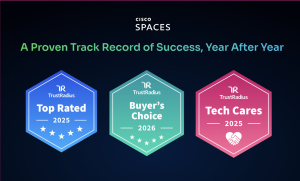
Occupancy management is the art and science of utilizing space efficiently to improve productivity and enhance user experience. Let’s explore what occupancy management entails, its importance for businesses, and practical strategies to make the most of your space and discover actionable tips to optimize your workplace and align space usage with organizational goals.
What Is Occupancy Management?
Occupancy management involves tracking and analyzing how people use physical spaces — such as office floors, meeting rooms, and communal areas — to make informed decisions about layout, capacity, and efficiency. By leveraging real-time and historical data, organizations can ensure spaces are right-sized and optimized to meet demand. This approach is a key element of smart workplace strategy, balancing operational requirements with employee comfort and productivity. Effective occupancy management helps create environments that support business goals while enhancing overall user experience.
Where Occupancy Management Delivers Impact
Occupancy planning and management delivers immense value across various industries where space is a vital resource for operations and user experience. By leveraging data, organizations can optimize utilization, improve efficiency, and meet evolving needs.
- Corporate offices – Use occupancy data to support hybrid work, reduce unused space, and improve planning for desks, meeting rooms, and amenities.
- Universities and campuses – Right-size classrooms and track space usage in libraries, labs, and common areas to optimize scheduling and resource allocation.
- Retail stores – Monitor foot traffic and flow to enhance customer experience, adjust staffing levels, and manage safety protocols during busy hours.
- Event venues and stadiums – Track crowd density in real time to ensure compliance, streamline crowd control, and elevate visitor experience during large events.
The Benefits of an Occupancy Management System
Implementing an occupancy management system delivers tangible benefits by helping organizations maximize space utilization, reduce costs, and improve overall efficiency. By aligning physical environments with actual usage patterns, businesses can create more productive, comfortable, and adaptable spaces. These meet the needs of employees, customers, and visitors.
Unlocking Actionable Data & Insights
The most impactful benefit of occupancy management is the ability to transform real-time and historical space usage data into actionable insights. This data empowers leaders to make confident decisions about space planning, resource allocation, and workplace strategy, ensuring environments are optimized for current and future needs. By replacing approximation with data-driven clarity, organizations can effectively align their spaces with evolving priorities and goals.
Smarter Space & Occupancy Planning
Occupancy data enables workplace teams to pinpoint underused, overused, or misused spaces, providing a clear picture of how environments are functioning. With these insights, organizations can redesign layouts, consolidate floors, or repurpose rooms to better align with employee needs and maximize the efficiency of their physical footprint. This proactive approach ensures that every space serves a meaningful purpose and contributes to overall workplace success.
Improved Operational Efficiency
Accurate space utilization data enhances operational efficiency by enabling targeted cleaning schedules and optimized energy management via improved HVAC adjustments. By understanding which areas are actively used, organizations can allocate resources more effectively — reducing waste and ensuring critical services are directed where they’re needed most. This data-driven approach supports sustainability, lowers operating costs, and improves the overall functionality of the workplace.
Enhanced Employee Experience
Employees thrive in workplaces that adapt to their real needs, benefiting from reduced overcrowding and well-designed, functional spaces. By leveraging occupancy data, organizations can create environments that promote comfort, collaboration, and productivity. A responsive workplace not only enhances employee satisfaction but also supports their ability to perform at their best.
Informed Decisions About Real Estate
Space usage trends provide organizations with the insights needed to make informed real estate decisions, such as negotiating leases, consolidating underutilized areas, or planning for expansion. By relying on accurate data leaders can ensure their real estate strategies align with actual needs, optimizing costs and maximizing the value of their physical footprint. This data-driven approach brings clarity and confidence to long-term space planning.
Improved Safety & Compliance
Occupancy monitoring helps ensure safety and compliance by providing accurate data to meet fire code capacity limits and optimize emergency evacuation plans. During pandemic-era protocols, it supports proper space distancing by identifying overcrowded areas and facilitating adjustments to maintain safe occupancy levels. This proactive approach enhances workplace safety while meeting regulatory requirements.
Best Practices for Effective Occupancy Monitoring
Collecting occupancy data is only the first step; success lies in thoughtful implementation and regular refinement to ensure the data drives meaningful change. By following best practices, organizations can maximize the impact of occupancy monitoring, creating smarter, more efficient, and responsive workplaces.
Use Dedicated Occupancy Management Software
Investing in dedicated occupancy management software ensures that data is not only collected but also translated into actionable insights. Platforms like Cisco Spaces offer powerful apps designed to visualize real-time occupancy, set customizable thresholds, and analyze trends across multiple locations. This enables organizations to make data-driven decisions that optimize space usage, enhance safety, and improve the overall workplace experience.
Define Clear Goals & KPIs
Defining clear goals and KPIs is essential for effective occupancy management, ensuring efforts are aligned with organizational priorities. Examples of measurable outcomes include reducing underutilized meeting rooms, increasing workspace efficiency, or identifying opportunities for consolidating floor space. Clear objectives enable organizations to track progress and ensure data is driving meaningful improvements.
Engage Facilities & Workplace Teams
Collaboration between facilities teams, IT, and workplace strategists is crucial to ensuring occupancy data is actionable and aligned with business goals. By working together, these groups can interpret data in context, identify opportunities for improvement, and implement solutions that enhance efficiency, safety, and employee satisfaction. This cross-functional approach ensures occupancy monitoring drives meaningful outcomes.
Use Real-Time Alerts Thoughtfully
Real-time alerts can be a powerful tool when occupancy thresholds are thoughtfully set to prioritize safety and streamline movement within a space. For example, alerts can help prevent bottlenecks or congestion in high-footfall areas, promoting smoother operations and a better user experience. By using these notifications strategically, organizations can proactively address issues before they escalate.
Prioritize Privacy & Transparency
Prioritizing privacy and transparency is essential when implementing occupancy management solutions. Cisco Spaces uses anonymized, opt-in data to protect individual identities while still providing valuable insights. Clearly communicating these privacy safeguards helps build trust with employees, ensuring they feel comfortable and confident in the organization’s approach.
Real-World Use Cases
Exploring real-world use cases highlights how occupancy management solutions can solve common workplace challenges and drive meaningful outcomes. From optimizing space utilization to improving employee experiences, these scenarios demonstrate the practical benefits and impact of leveraging occupancy data effectively.
Reduce Overcrowding by Identifying High-Traffic Hotspots
Occupancy data enables teams to pinpoint high-traffic hotspots and track when and where crowding occurs, allowing proactive steps to prevent it from escalating into a safety concern. Cisco Spaces offers real-time visibility into floor or zone-level occupancy, empowering organizations to monitor footfalls, track historical usage patterns and optimize spaces accordingly. This helps maintain safer, more efficient environments for employees and visitors.
Dispatch Cleaning Crews Only When Needed
Real-time occupancy data enables facilities teams to trigger cleaning protocols based on actual usage of spaces, instead of relying on fixed schedules, ensuring resources are used more effectively. Cisco Spaces empowers organizations to optimize staffing by identifying high-touch or frequently used areas, allowing cleaning crews to prioritize these spaces efficiently and maintain a healthier workplace environment.
Save Energy by Automating HVAC & Lighting Based on Usage
Occupancy monitoring allows building systems to operate smarter by aligning HVAC and lighting usage with real-time occupancy patterns. Smart Rooms, a solution by Cisco Spaces, uses real-time occupancy insights to dynamically adjust these systems. This not only improves energy efficiency and sustainability but also helps reduce operational costs.
Improve Room Booking & Space Allocation
Occupancy data also provides visibility into how meeting rooms and workspaces are being utilized, highlighting underused spaces, overbooked rooms, or inefficient scheduling patterns. Cisco Spaces equips organizations with these insights, enabling them to right-size meeting rooms and better allocate work zones to align with the needs of hybrid teams. This ensures more effective space utilization and an improved workplace experience.
Turn Real-Time Monitoring into Smarter Decisions with Cisco Spaces
Occupancy analytics from Cisco Spaces empowers organizations to make smarter, data-driven decisions regarding space usage, safety, and efficiency. By unlocking access to real-time and historical occupancy patterns, Cisco Spaces helps teams optimize the utilization of space and resources, enhance safety measures, and improve overall operational efficiency. It provides a scalable, network infrastructure-based platform that offers reliable monitoring coupled with insights for long-term space planning, ensuring that organizations can adapt and thrive in dynamic environments.
Take a product tour to see how Cisco Spaces delivers real-time occupancy insights that support smarter space planning.


